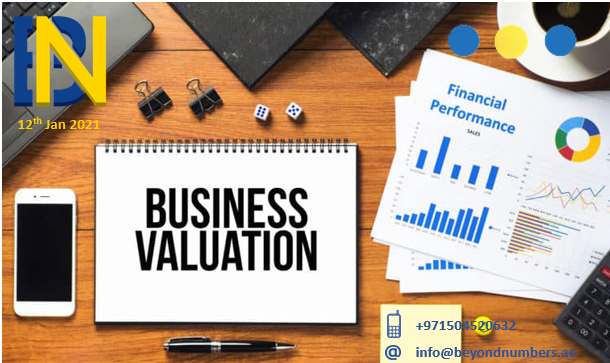Business valuation is the process & procedures used to establish the economic value of a business. There are multiple reasons for the requirement of business valuation. The major reasons for business valuation are:
- Establish the price of the business in order to sale it due to retirement, health etc.
- Requirement for funds to expand the business. For debt or equity financing, potential investors will need to understand if the business has sufficient worth.
- For adding shareholders or in case of a buyback, the business valuation is required to calculate the share price.
- In case of disputes or other situations involving the business leads to court cases, business valuation is required for resolution.
There are three popular valuation methods:
- Asset based approach
- Market based approach
- Income base approach.
Let us consider each of these approaches in slightly more details. Each approach has its limitations & one may be more suitable over the other depending on the size & ownership of the business. Sometimes a combination of these methods may be best suited.
Asset based approach:
The business valuation in asset-based approach can be done in two ways:
- Consider the balance sheet of the company, list the total assets of the business & subtract all its liabilities to arrive at the book value.
- Consider the sale value of all the assets, deduct all the liabilities and arrive at the liquidation value.
Using the asset-based approach for a sole proprietorship is difficult as some assets used for business may be in the name of the owner. Separating business & personal assets is a challenge for a potential buyer.
Net Asset Value is easier to understand. It is calculated by assigning a fair value to the business assets less the external business liabilities. The key is assigning a fair value, as it may be significantly different from the acquired assets (non-depreciating) or recorded value of depreciating assets.
The true value of the business may be higher the NAV simply due the unique way the assets are used. Replacement Cost Method addresses some of these issues. It is the invest that a person needs to make today to set up an exactly same business.
Market based approach:
In this approach, the value of a business is established by comparing it to similar businesses that have been recently sold. This method works well if there are a sufficient number of similar businesses to compare. Assigning a value sole proprietorship with this method is difficult as they are individually owned and public information on sale of such businesses is rarely available. The market approach can also be relatively simple to apply as this approach derives estimates of value from relatively simple financial ratios, drawn from a group of similar companies. In this approach the steps are as follows:
- Identify comparable firm/ firms
- Identify a suitable multiple, the most popular being:
- Selling price divided by gross revenue
- Selling price divided by sales
- Selling price divided by cash flow
- Selling price divided by the book value of business assets
- Selling price divided by net income
- Use the selected multiple to arrive at the business value
With a publicly traded company, it’s easier to arrive at a market value using the stock price. Though this is the simplest way to set a value, but it’s not the best. The share price is based on the perceived value of the company, not reflecting the actual worth of the company. The performance of the company in the future may be better or poorer compared to current performance. Also, the market scenario & sentiments can affect the share prices irrespective of the performance of the company.
Income base approach
The income base approach determines the value of a business based on the ability of the business to generate wealth in the future. The established methods under the income approach are:
Discounted cash flow method:
This method forecasts the future cash flow of the business & discounts it back to today using current weighted average cost of capital. The DCF model requires extensive details and analysis – building a financial model on various scenarios and performing sensitivity analysis. The buyer can foresee the future cash flow, however the scenarios used in calculation can be optimistic rather than realistic.
Capitalization of earnings method:
In this method, a valuation is arrived by dividing the historical cash flow of the business by a capitalisation rate that is in lie with the risks of the given business and is expected to maintain the past growth in the future as well. The advantage of this method is that it is based on actual numbers from the past performance. On the flip side the assumption is that the same performance will be maintained in the future.
Valuation of sole proprietorship can be tricky as the future performance of the business is directly linked to the management of the business owner. There is always an uncertainty n terms of the service & professionalism that will be delivered by the future owner.
Need help? We at Beyond Numbers will always be there for you.
Read more; https://beyondnumbers.ae/financial-auditing-helps-you-to-improve-your-business

